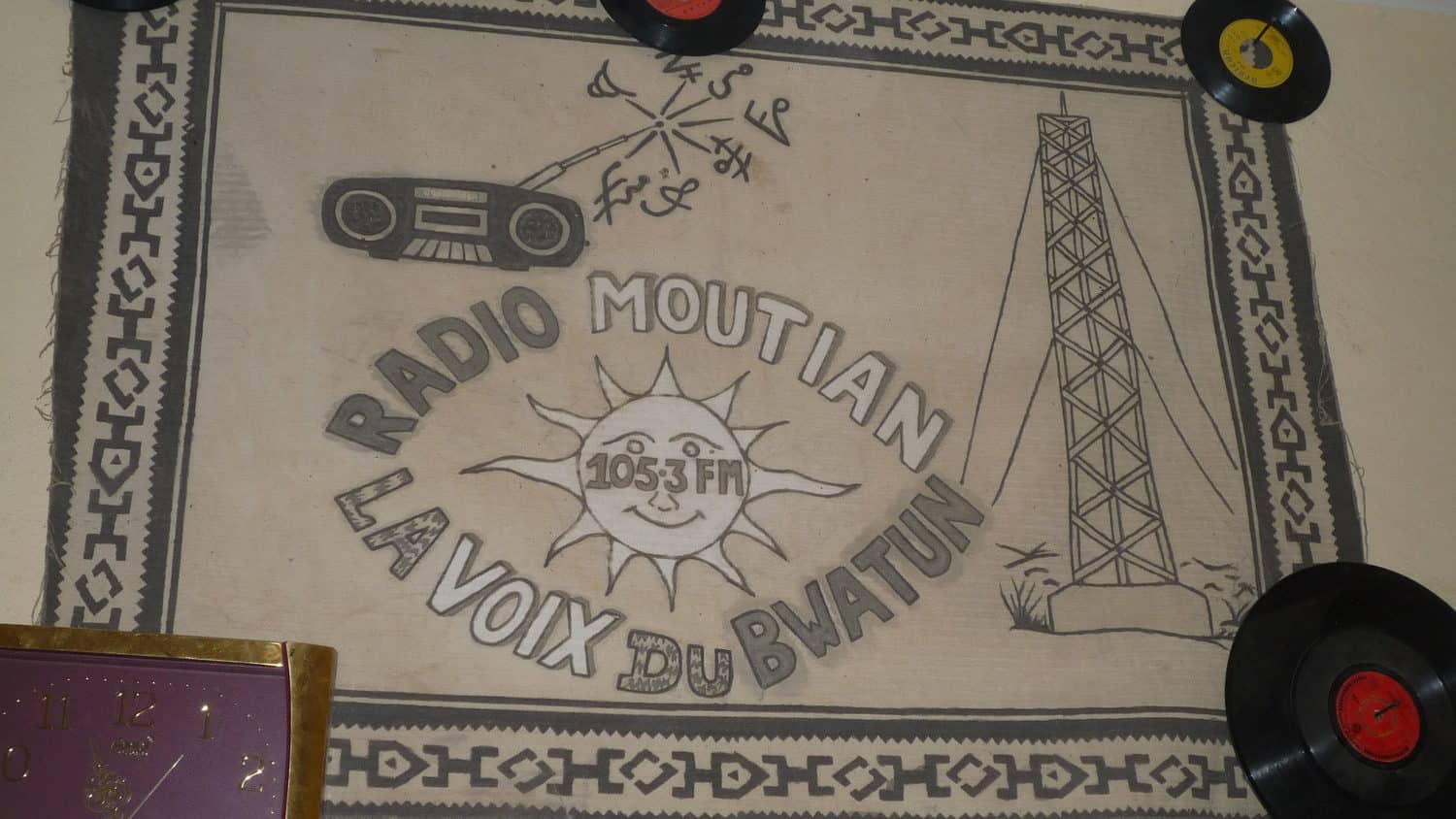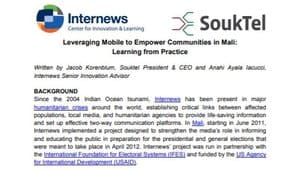
The Mali Humanitarian Information Service (HIS) is a platform for interactivity and dialogue between humanitarian organisations and local audiences. The project helps internally displaced people to get access to vital, life-saving information and improve two-way communication between themselves and aid providers. In collaboration with local, independent radio station Radio Kledu and its regional radio stations, Internews produces a daily humanitarian information radio program and trains Malian journalists in basic radio production and humanitarian reporting skills. Mobile phone technology, social media and other innovative means are used to enable listeners to take part in call-in shows and live broadcasts within the community. Internews also mentors and trains Radio Kledu’s staff in key broadcasting skills with a view to them subsequently taking on a greater role in the training and administration of local radio projects.
“Info Aide, le journal de l’humanitaire improves our access to humanitarian organizations and allows us to know better what their actions are. People in Mali had only limited access to information on humanitarian issues, even though they were strongly interested. This program fills the gap and helps the journalists and the audience to get a better understanding of the humanitarian community.”
Bakary Cissé, Editor-in-Chief of Radio Klédu
IMPACT LESSONS LEARNED

This report looks at the successes and challenges of this project, which enabled Malian citizens to contribute more actively to a national discourse on key topics. Aug 14, 2018
- Reaching affected communities – Between 25% and 33% of target audiences heard programs and 40% of respondents report declared having improved knowledge and understanding of humanitarian principles and organizations.
- Building media capacity – In the end-of-project assessment of the desk journalists’ journalistic skills, the trainer gave 12 scores of “Very good” (4 out of 5) from a total of 40 scores, and 18 scores of “good” (3 out of 5) – a total of 30 out of 40 good or very good. Considering the low level of skills at the start of the project this was a significant result.
- Connecting media to humanitarians – An important element of the increased capacity aimed at was improvement in journalists’ relationships with humanitarian organizations. This improvement was demonstrated through the regular presence of the project’s Humanitarian Media Liaison Officer at editorial meetings and the direct engagement of some organizations with the desk. However, improvement for individual reporters was not tracked and documented.